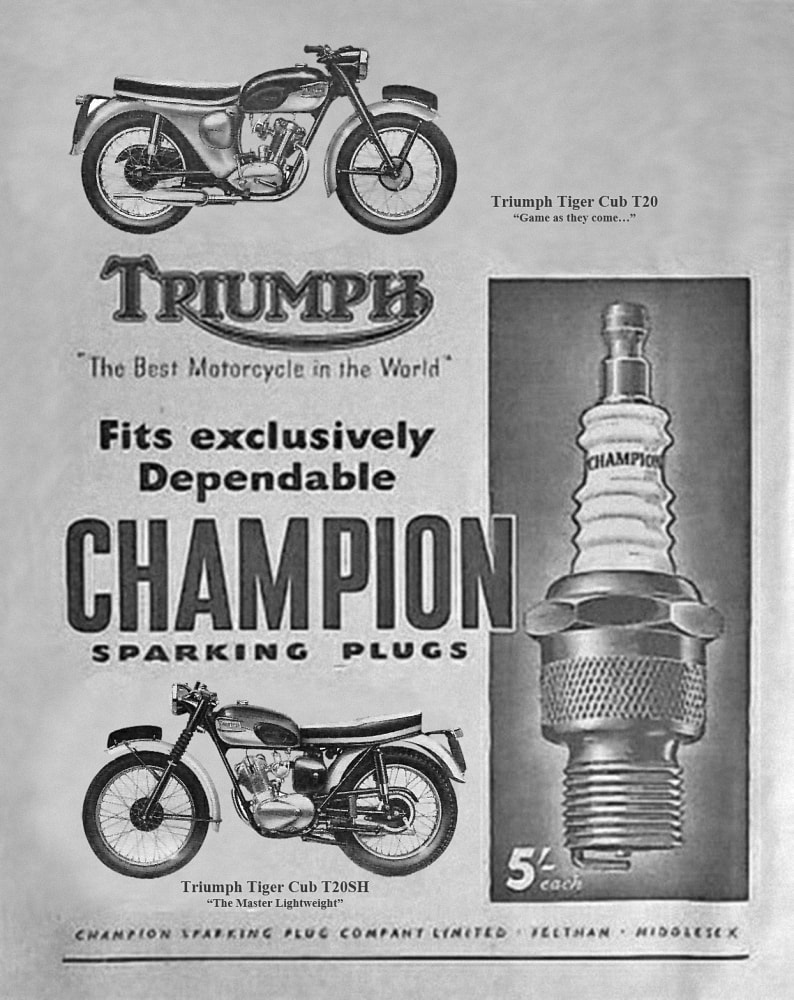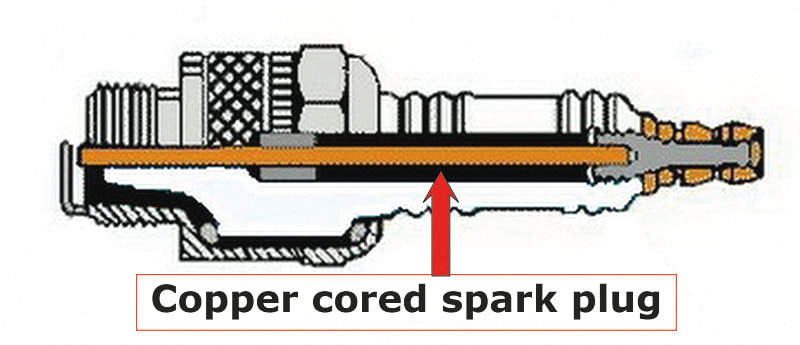Spark Plugs and Sparking
But which is best for your Tiger Cub or Terrier?
But which is best for your Tiger Cub or Terrier?
|
Standard, Platinum, Double Platinum, Iridium? But which is the best for your bike?
For riders of more modern machines it's all fairly easy. Just look in the owner's manual and be guided by what it says. The manufacturer has already decided which type of spark plug is best, so job done. For your Tiger Cub or Terrier though, which type of spark plug should you fit? Are some of the more recent additions to spark plug catalogues really better or even suitable? The simple answer is just like that for a modern machine; take the manufacturer's original recommendations, don't be tempted by the newer platinum/iridium 'improved' options and stick with the standard copper spark plugs. Here's why Standard copper cored spark plugs really need to be checked (and possibly re-gapped) every 3000 miles (5000 km) and with vehicle manufacturers moving to longer and longer periods between services for their petrol-powered engines, they simply couldn't last the extended distance. |
The downside being both of these metals are far inferior conductors compared to copper, and actually both platinum and iridium plugs perform at a lower level than copper spark plugs.
They also need far higher electrical energy to produce a decent spark across the gap than generated in Cub or Terrier ignition systems and is the reason why high energy systems (up to 40,000 volts +) are used in newer vehicles.
They also need far higher electrical energy to produce a decent spark across the gap than generated in Cub or Terrier ignition systems and is the reason why high energy systems (up to 40,000 volts +) are used in newer vehicles.
|
So the answer is
Don't be tempted by Platinum or Iridium, stick to a copper-cored spark plug to get the best performance from your Tiger Cub or Terrier ignition system. But it may not be the plug's fault at all! Spark plugs come in different grades (or heat ranges) - hotter or cooler. A plug is said to be 'hotter' if its construction allows the tip to keep more heat in it, whereas a 'cold' plug allows more heat to escape through the body of the plug leading to a lower tip temperature. |
The spark plug originally recommended for your engine was one that would enable the machine's performance to be used to the full. Do you still use it in that way, or do you ride at a more sedate pace with mechanical sympathy in mind?
If so and the plug is coloured black and 'sooty' , it may be you need a hotter grade to suit a more leisurely style of riding.
But be warned; too hot and the result may be pre-ignition (pinking) and even a holed piston! Perhaps try one grade hotter just as an experiment (or change your riding style to a more sporting one!).
Other things to check
Is the rest of your ignition system fit for purpose? It's not uncommon for the resistor in a spark plug cap to fail, and when this happens it can give all the signs and symptoms of a faulty plug.
All you need to check them is a multi-meter to test the resistance (usually indicated somewhere on the cap) and continuity. Remove the cap from the HT lead and put one probe in one end, the second probe in the other and check the reading. If it's not what it should be, throw the cap away and fit a new one (it's a good idea to check the new one too before fitting).
Whilst you're at it, remove the HT lead from the coil and check the continuity through that also. If you have copper cored ones there should be next to no drop in reading.
Check the condition/gap of the points - any excessive sparking, suspect the condenser and fit a new one. As for a suspected faulty ignition coil. Sometimes it's better just to buy a new one, but make sure it's a quality one.
Happy Sparking!
If so and the plug is coloured black and 'sooty' , it may be you need a hotter grade to suit a more leisurely style of riding.
But be warned; too hot and the result may be pre-ignition (pinking) and even a holed piston! Perhaps try one grade hotter just as an experiment (or change your riding style to a more sporting one!).
Other things to check
Is the rest of your ignition system fit for purpose? It's not uncommon for the resistor in a spark plug cap to fail, and when this happens it can give all the signs and symptoms of a faulty plug.
All you need to check them is a multi-meter to test the resistance (usually indicated somewhere on the cap) and continuity. Remove the cap from the HT lead and put one probe in one end, the second probe in the other and check the reading. If it's not what it should be, throw the cap away and fit a new one (it's a good idea to check the new one too before fitting).
Whilst you're at it, remove the HT lead from the coil and check the continuity through that also. If you have copper cored ones there should be next to no drop in reading.
Check the condition/gap of the points - any excessive sparking, suspect the condenser and fit a new one. As for a suspected faulty ignition coil. Sometimes it's better just to buy a new one, but make sure it's a quality one.
Happy Sparking!



